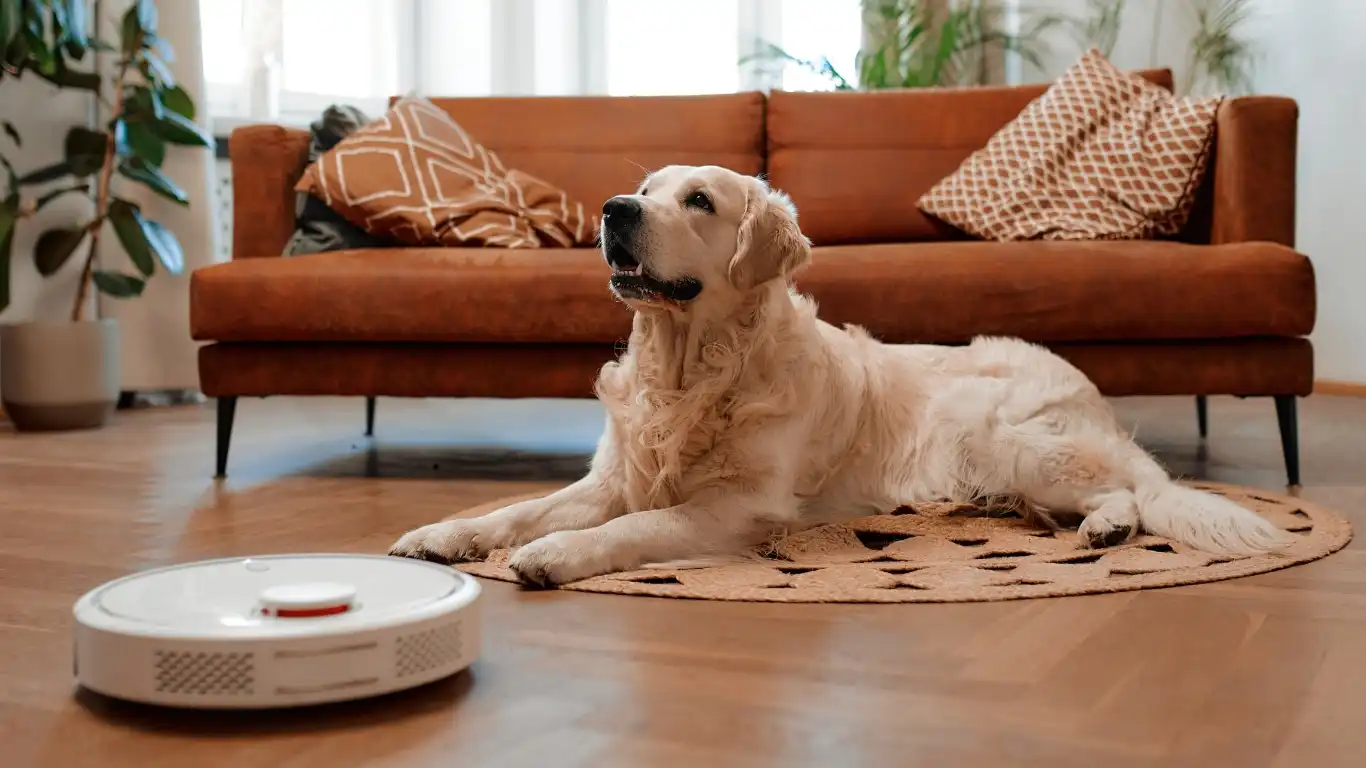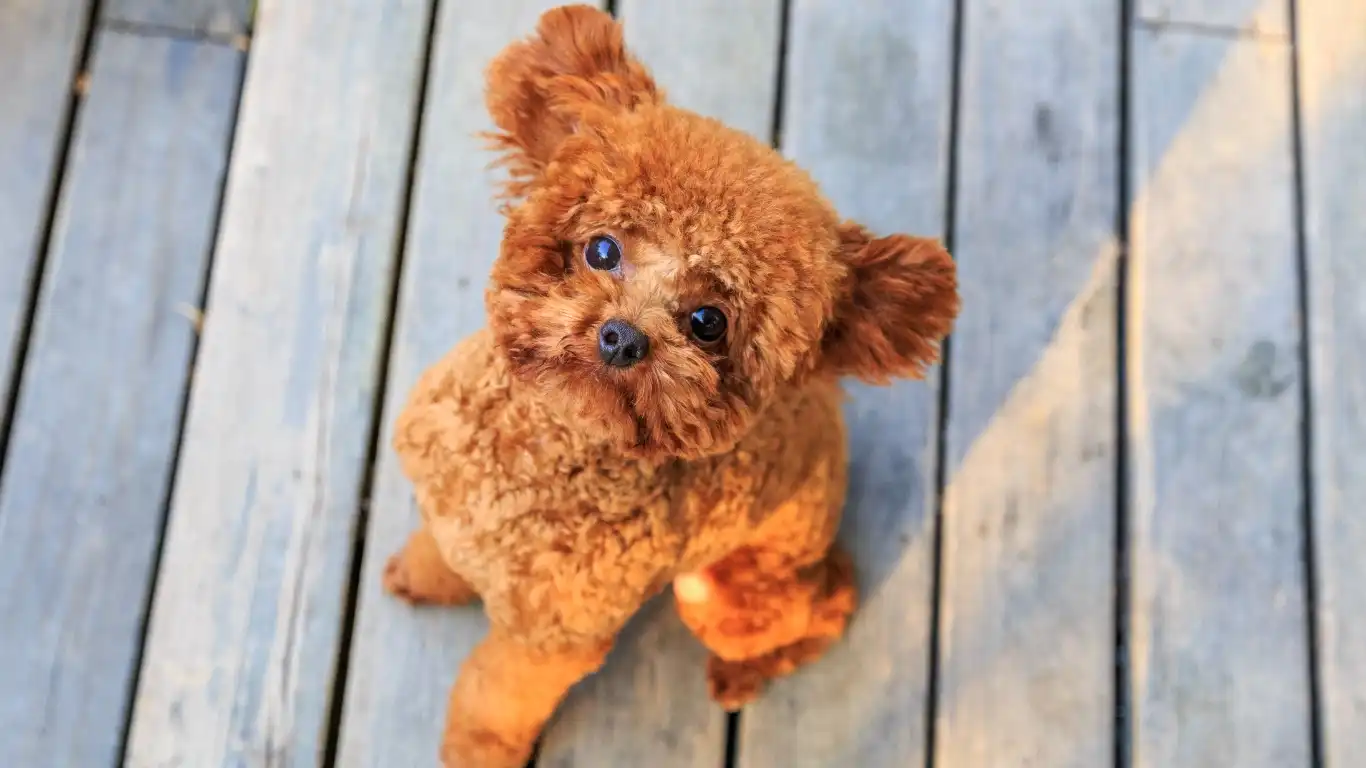How to Properly Clean Dog Bedding: Essential Tips for a Fresh Home
If you’re a dog owner, you know just how much love and care goes into making sure your furry friend is happy and healthy. But let’s be real—keeping everything clean is no easy feat! Whether it’s wiping muddy paws or dealing with those sweet but stinky furballs, cleaning up after your dog can feel like a never-ending task. One of the areas that often gets overlooked, though, is how to properly clean dog bedding. Trust me, as a Veterinary Technician with a focus on nutrition, I’ve seen first-hand the importance of keeping your dog’s sleeping area fresh and sanitized. Not only does it help maintain a clean environment, but it also supports your dog’s overall health. Let’s dive into why regular cleaning is important and how you can make this chore easier and more effective.
Why Properly Cleaning Your Dog’s Bedding Matters

As a pet owner, it’s easy to think of your dog’s bed as just a comfortable spot where they sleep. But did you know that improperly cleaned bedding can lead to a bunch of health issues? Things like bacteria, mold, dust mites, and even parasites can make their way into your dog’s bedding. Over time, this can contribute to skin infections, respiratory problems, and other unpleasant conditions. Not to mention, your dog’s coat can also suffer. Regular washing of their bedding is more than just about keeping things looking tidy—it’s an essential step in preventing these health risks.
Another key point to consider is that dogs often spend a lot of time in their beds, especially if they’re older, ill, or just love a good nap. The bedding they sleep on becomes a breeding ground for germs, allergens, and odors, all of which can affect your dog’s overall comfort and health. I can’t tell you how many times I’ve had owners come to me, wondering why their dog keeps scratching or has a mysterious rash, only to discover the culprit was a dirty bed!
The Basics of Cleaning Dog Bedding
Before we get into the nitty-gritty details, let’s talk about the basics. You want to make sure you’re doing more than just shaking off your dog’s blanket every once in a while. Regular cleaning requires a systematic approach, and here are the basics you need to know:
- Frequency: Depending on your dog’s activity level, you should aim to wash their bedding at least once a week. If your dog tends to roll around in dirt or has allergies, you might need to wash it more often.
- Type of Bedding: Different types of bedding, like memory foam or orthopedic beds, may require different cleaning methods. Always check the manufacturer’s instructions before you start.
- Washing Machine vs. Hand Wash: Most dog bedding can go in the washing machine, but if you’re dealing with a larger, thicker bed, hand washing or using a gentle cycle may be better to prevent damage.
Step-by-Step Guide: How to Properly Clean Dog Bedding

Ready to roll up your sleeves and get to cleaning? Here’s a step-by-step guide to make sure you’re tackling this job like a pro:
Step 1: Remove Loose Hair and Debris
Before you toss your dog’s bedding in the wash, make sure you remove any loose hair, dirt, or debris. A lint roller or vacuum with a hose attachment works wonders for this. Trust me, it makes the washing process way more effective when you get rid of that extra stuff first.
Step 2: Pre-Treat Stains and Odors
If your dog has been dealing with any “accidents” or the bedding smells less-than-fresh, pre-treat the fabric with an appropriate stain remover or pet-safe odor eliminator. I always recommend using products that are safe for pets because some cleaning agents can leave harmful residues. Let it sit for a few minutes before throwing it in the wash.
Step 3: Use Pet-Friendly Detergents
When washing the bedding, always choose a detergent that’s pet-safe. You’d be surprised at how many regular detergents can cause skin irritation for your dog, especially if they have sensitive skin. Look for gentle, hypoallergenic options that won’t leave behind harsh chemicals. You might also want to add a bit of vinegar to the wash to help neutralize any odors.
Step 4: Wash on a Gentle Cycle
Now it’s time to wash! Set your washing machine to a gentle cycle with cold or warm water—never hot, as it can damage the fabric. The gentle cycle helps preserve the integrity of the bedding while ensuring a thorough clean. If you have a large bed that won’t fit in your machine, you can always use a laundromat or hand wash it in the tub. In this case, just make sure to scrub all corners and creases to get out as much dirt as possible.
Drying the Bedding Properly

After washing, it’s important to dry the bedding correctly. While you might be tempted to toss it in the dryer, make sure to check the care instructions first. Some types of dog beds (especially those with foam) may need air drying to maintain their shape. If you do use the dryer, opt for a low heat setting to avoid any shrinkage or damage. If you’re air drying, hang the bedding in a well-ventilated area to speed up the drying process. Just make sure it’s completely dry before you let your dog back on it.
Step 5: Regular Maintenance
Now that your dog’s bedding is fresh and clean, it’s time to think about maintenance. Try to regularly vacuum the bedding to keep it free of loose hair, dirt, and dust. This way, you won’t need to wash it as often, but you’ll still maintain a clean, comfortable spot for your dog to rest.
In my experience, a little bit of regular maintenance goes a long way in preventing buildup of odors and grime. Plus, your dog will love having a clean bed to snooze in!
Common Mistakes to Avoid When Cleaning Dog Bedding

Cleaning dog bedding seems pretty straightforward, right? But let me tell you, there are a few common mistakes that even experienced pet owners (myself included) can make. And these mistakes can not only affect the cleanliness of the bedding but also your dog’s health. Here are some things to watch out for:
1. Using Harsh Chemicals
It might be tempting to reach for your regular laundry detergent or even bleach to get those stains out. But trust me, using harsh chemicals is a big no-no when it comes to your dog’s bedding. These chemicals can leave behind residue that irritates your dog’s skin, eyes, or respiratory system. I’ve seen dogs develop itchy patches, rashes, and even sneezing fits after their bedding was washed with strong cleaners.
Instead, opt for natural or pet-safe detergents that are gentle on both the environment and your pet. There are also some DIY cleaners, like a mix of baking soda and vinegar, that can get the job done without putting your dog at risk. And always make sure to rinse the bedding thoroughly—this is one cleaning step I’m sure you don’t want to skip.
2. Not Drying Thoroughly
So you’ve washed your dog’s bedding, but did you remember to dry it properly? Damp bedding can quickly turn into a breeding ground for mold and bacteria. That’s why it’s crucial to make sure the bedding is completely dry before your dog jumps back into it.
If you’re using a dryer, it’s a good idea to keep the heat low to prevent shrinking or damaging the fabric. Air-drying is a great option if you’ve got the space and time. You can hang it on a clothesline or even place it flat in a well-ventilated area. Just make sure there’s no moisture left before you bring it back indoors for your dog.
3. Ignoring the Bed’s Material
Not all dog beds are created equal, and the material can play a huge role in how you clean it. For example, memory foam beds (which are awesome for older dogs or dogs with joint issues) can get ruined if they’re washed in hot water or dried too aggressively. On the other hand, cotton or polyester beds are often more forgiving when it comes to cleaning.
Always check the care instructions for your specific bedding. If your dog has a high-maintenance bed, like one with foam or delicate fabric, it might need more gentle treatment—hand washing or spot cleaning might be the better route. I can’t tell you how many times I’ve seen foam beds that were washed too roughly end up all lumpy and uncomfortable for the dog!
How to Clean Different Types of Dog Bedding

Dog bedding comes in all shapes and sizes, and each type might require a different cleaning method. Here’s a breakdown of how to clean some of the most common types of dog beds:
Memory Foam Beds
Memory foam beds are super popular because they offer extra comfort and support, especially for senior dogs or those with joint problems. However, they require a bit of TLC when it comes to cleaning. The foam itself isn’t machine washable, so you can’t just toss it into the washer like other types of beds. Instead, try spot cleaning any stains with a mild soap or pet-safe cleaner.
If your foam bed has a removable cover, that’s great! Wash the cover according to the manufacturer’s instructions, usually on a gentle cycle with cold water. Be sure to let the foam air-dry completely, and avoid putting it in the dryer as the heat can damage it.
Orthopedic Beds
Orthopedic beds are similar to memory foam beds but often have more layers to them, designed to provide better support for older or ill dogs. When cleaning an orthopedic bed, the process is pretty much the same as with memory foam—focus on washing the removable cover while avoiding the foam insert itself. Again, air-drying is the best option to preserve the shape and integrity of the foam.
Cotton and Polyester Beds
Cotton and polyester beds are some of the easiest to clean because they’re durable and can usually go right into the washing machine. For these beds, just follow the same basic steps as outlined earlier: remove hair, pre-treat any stains, use a pet-safe detergent, and wash on a gentle cycle. These types of beds often dry quickly in the dryer or air-dry with no issues, so they’re perfect for busy owners!
Heated Dog Beds
If your dog has a heated bed for those cold winter nights, be sure to check the manufacturer’s instructions for cleaning. Most heated beds have removable covers that can be washed, but you’ll need to be extra cautious when cleaning the heating element. Always disconnect the electrical components before washing, and avoid getting the wiring wet. For spot cleaning, you can use a damp cloth to wipe down the surface of the bed.
Preventing the Need for Frequent Bedding Washes

Cleaning your dog’s bedding regularly is crucial, but let’s be honest—sometimes life gets busy, and you may not always have time to do a full wash. The good news is that there are ways to reduce how often you need to clean your dog’s bedding. Here are a few tips:
1. Use Bed Protectors
Bed protectors or waterproof liners are lifesavers, especially for dogs who are prone to accidents or those that shed a lot. These protectors create an extra layer between your dog and the actual bedding, which can catch most of the dirt, hair, and spills. It makes cleaning up so much easier, and you can wash the protector much more frequently than the entire bed.
2. Keep Your Dog Clean
While this might seem obvious, keeping your dog clean goes a long way in preventing a dirty bed. Regularly grooming your dog—whether it’s brushing, bathing, or wiping their paws after walks—will reduce the amount of dirt and hair that ends up on their bedding. If your dog has long fur, you may need to brush them daily, but it’ll make a huge difference in reducing the frequency of bedding washes.
3. Regularly Vacuum the Bedding
If you’re able to, vacuum your dog’s bed once or twice a week to get rid of hair, dirt, and dust. This will help maintain cleanliness between washes and can keep odors at bay. I love using a vacuum attachment specifically made for pet hair—it works wonders on bedding!
By following these steps, you can keep your dog’s bedding in good condition for much longer, which means fewer washes and a cleaner, healthier environment for your pup!
How to Handle Special Cases: Cleaning Dog Bedding for Puppies, Senior Dogs, and Dogs with Health Issues

Cleaning your dog’s bedding is crucial for all dogs, but it’s even more important for puppies, senior dogs, and dogs with health issues. Each of these groups has unique needs, and as a Veterinary Technician, I’ve seen how their health can be directly affected by their environment. Whether it’s sensitive skin, weaker immune systems, or other concerns, the care and attention to detail you give when cleaning their bedding can make all the difference.
Cleaning Bedding for Puppies
Puppies are cute, cuddly, and full of energy—unfortunately, they’re also notorious for making a mess! If you’re raising a puppy, you’ve probably noticed how quickly their bedding gets soiled, from potty accidents to muddy paws. Regularly cleaning their bedding is essential, not only to keep the bed fresh but to prevent the spread of bacteria, which is especially important when your puppy’s immune system is still developing.
For puppies, I recommend washing their bedding at least once a week, or more frequently if they’ve had accidents. You can use a mild detergent designed for sensitive skin or baby-safe laundry products, as these are gentle and less likely to cause irritation. Make sure to use warm water and avoid hot water, which can damage the fabric or shrink it.
Another consideration with puppies is that they often chew on things, including their bedding. So, ensure that the bedding material is durable and chew-resistant. Some fabrics or foam types might be better suited for puppies than others, and you’ll want to keep an eye on them to prevent any major damage to their bed during the chewing phase!
Cleaning Bedding for Senior Dogs
As dogs get older, they might experience mobility issues, joint pain, or incontinence. Senior dogs often spend more time lying in bed, and the bedding they sleep on needs to be more supportive, but also easier to maintain. Not only should you focus on comfort and cleanliness, but it’s also essential to reduce any discomfort that could worsen their health. Orthopedic beds are a great choice for older dogs, but they still require proper cleaning to maintain their effectiveness and comfort.
When cleaning bedding for senior dogs, I suggest washing it gently to avoid damaging any foam or memory foam layers. You also want to use hypoallergenic and gentle cleaning products, as older dogs are more susceptible to skin irritations and allergies. Since senior dogs often have a more sensitive sense of smell, using unscented or lightly scented products might be preferable, as strong scents can be overwhelming.
Another important aspect to consider is any potential incontinence issues that can occur in older dogs. Waterproof bed liners or covers can be a lifesaver here. They’ll protect the bedding from accidents and make cleaning much easier. Don’t forget to clean these liners regularly, too!
Cleaning Bedding for Dogs with Health Issues
Dogs with health issues, such as allergies, skin conditions, or those recovering from surgery, need extra attention when it comes to their bedding. For dogs with allergies, dust mites, mold, or even certain detergents can trigger reactions. This makes it even more critical to keep their bedding clean and free from potential allergens.
In these cases, you’ll want to wash their bedding in a hypoallergenic detergent, and perhaps consider using a detergent-free, natural cleaning method, like a vinegar rinse, to remove lingering particles. For dogs with skin issues, like rashes or eczema, avoid harsh chemicals that could aggravate the condition. I always recommend gentle, fragrance-free options when dealing with dogs that have sensitive skin.
Dogs recovering from surgery or injury may also require special bedding. These dogs might need extra cushioning to support their recovery and to prevent any pressure sores from developing. Additionally, be mindful of how frequently you change the bedding. A clean, soft surface will encourage them to rest, which is crucial for their healing process.
Maintaining Dog Bedding for Long-Term Use

It’s important to not only clean your dog’s bedding regularly but to maintain it for long-term use. Just like any other piece of furniture or fabric in your home, proper care can extend the life of your dog’s bedding. Here are some tips to ensure your dog’s bed stays in good condition for as long as possible:
1. Rotate the Bedding
Rotating the bedding, or flipping the mattress if your dog has a cushioned or memory foam bed, helps prevent uneven wear. This is especially helpful for larger beds that your dog spends a lot of time on. Flipping it ensures that one side doesn’t get too worn out, which could reduce the bed’s overall comfort and support.
2. Avoid Over-Washing
While cleaning the bedding regularly is crucial, over-washing can wear down the fabric, especially if it’s a more delicate material. Try to find a balance between cleaning frequently and not putting too much stress on the bedding. In between washes, you can use a vacuum or lint roller to pick up hair and dirt, which will extend the time between washes.
3. Repair Minor Damages Quickly
If your dog’s bedding has a small tear or fray, try to repair it quickly to prevent it from getting worse. Even a small hole can be an invitation for dirt, bacteria, and pests to enter the bedding, so taking care of minor damages will help prolong its life.
4. Store Bedding Properly
If you ever need to store your dog’s bedding for any reason (perhaps when traveling or after replacing an old bed), be sure to store it in a clean, dry place. Avoid leaving it in damp areas, as this can lead to mold and mildew growth. A storage bag or a clean bin can keep it safe and fresh until you’re ready to use it again.
References
If you’re looking for additional resources about dog care, I highly recommend checking out these trusted sites:
- PetMD – A great resource for dog health and wellness tips.
- American Kennel Club (AKC) – Find more information about dog breeds, care, and training.
- National Institutes of Health (NIH) – For health-related information, especially on allergies and other concerns that may affect your dog.
- Health.com – Offers health and wellness tips that can be helpful for both you and your dog!
Disclaimer
The information in this article is based on my personal experience as a Veterinary Technician and is intended for general informational purposes only. Always consult with your veterinarian for advice on your specific pet care needs, especially if your dog has special health concerns or conditions. While cleaning your dog’s bedding is an essential part of maintaining their health, it should not replace regular veterinary check-ups or treatments.






